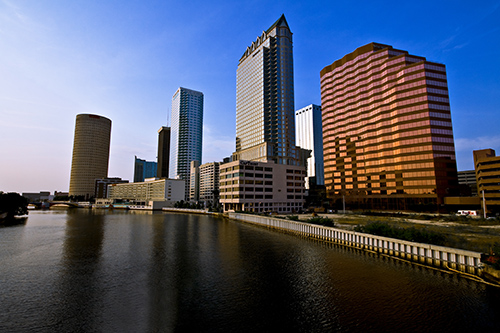I have a lot of family in Florida, but admittedly I don’t know a ton about Tampa. I’ve always found that people in Florida tend to disparage areas that aren’t their own — Miami will trash Orlando, and vice versa, for example — and I’ve only been to Tampa a handful of times (no family there), so perhaps my context is devoid. But it seems like an interesting place right now in terms of this whole “millennials will soon be the dominant force in the economy and home ownership, so what should a city do?” discussion. (For three things cities can do, see here, here and here.)
The City Is Growing Fiscally
Consider this: rents at Crescent Bayshore are going for $2.32 a foot, which essentially means that a 3BR, 1,600-foot spot is $3,800/month. That’s not quite NYC-level, but it’s close in some regards. But there’s always a caveat, and in this case it’s two-fold:
Multifamily experts say the building’s unique location, with its waterfront views and proximity to downtown and South Tampa, allow it to command those kinds of rents. SkyHouse, a 23-story, 320-unit apartment high rise under construction in Channelside, will likely command rent above $2 per square foot, in line with the Element, an apartment tower in Tampa’s urban core. Across the Bay, rents at Madera Prime 235 in St. Petersburg are close to or on par with Crescent Bayshore, but downtown St. Petersburg is farther ahead than Tampa in the race to create a live-work-play environment.
Good: near water and downtown/South Tampa. Bad: St. Petersburg is ahead of them on creating an environment.
But Is Tampa Doing Enough To Retain Millennials?
Now consider this, from Medium. A Tampa-based writer opens with this:
For a city that has a stated goal to become the high-tech center of the Southeast by attracting and retaining the best young talent Tampa sure is doing a lot to push us out.
Some of the central arguments: blue laws (which are ridiculous no matter where they are), the demolition of the “Bro Bowl” (a skate park), and restrictions on Uber and Lyft, among other ride-sharing-type services.
This is a really interesting crossroads situation here. You see the same stuff in a place like Boston, which has a higher reputation for innovation than a place like Tampa — but still, Boston is very much controlled by old-school, back-door politics in many ways. I suspect it’s the same in the Tampa area. Taxis are a f’n terrible industry. They needed to be disrupted, and that’s what Uber/Lyft/etc. do. But they’re also very politically powerful, and that makes it hard (it’s hard to fight the man, after all).
If you want young people, you need progressive ideas — a generalization, but true.
I was actually talking to my friend from Seattle recently about an off-shoot of this concept: Seattle is an incredibly progressive place on things like marijuana, gay marriage, and even minimum wage. Yet, they have mostly-awful public transportation that makes it really hard to get from A to B in a quick, easy fashion. So sometimes being progressive isn’t enough; you need to be both progressive and practical. That’s how you get millennials.
In some ways here, it feels like Tampa is being neither — despite a Tampa-area company being the first to have an openly-gay CEO among publicly-traded companies.
This Is The Future Of Cities
We don’t know what’s going to happen with airfare in the next 20-30 years — if it goes through the roof for some reason, I feel like a lot of people might start living closer to their core family, irregardless of what industry they wanted to be part of — but in terms of the future of U.S. cities, everything comes down to appealing to a new crop of dwellers (those being millennials). It’s a different world for them — heck, in terms of hotels too — and Tampa seems like one of those “crossroads cities” that has the potential to ratchet up (near water, decently cheap cost of living, good tax situation, a couple of tech hubs, etc.) but needs to make sure it makes the right decisions in the process.
